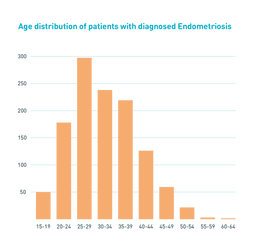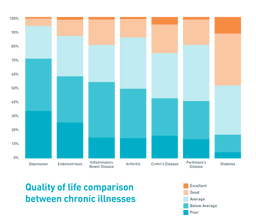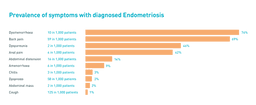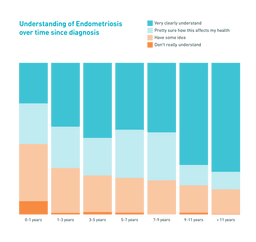BetterConsult data insights helping GPs to identify patients at risk of Endometriosis
Our Australian first pre-consultation patient questionnaire BetterConsult is helping GPs uncover patients who may be sub-optimally screened, diagnosed, or treated in primary care.
It does this via a sophisticated algorithm that analyses the patients pre-filled questionnaire with the patients’ medical history within the GPs clinical software. BetterConsult will then display a recommendation to the GP in the output.
BetterConsult has a rich and categorical patient-reported data covering all therapeutic areas including Endometriosis and Chronic Kidney Disease (CKD). To date, more than 6.5 million pre-consultation questionnaires have been completed.
The prevalence of Endometriosis
Endometriosis is a chronic inflammatory disease where tissue similar to the lining of the womb grows outside it in other parts of the body (Endometriosis Australia, 2023).
According to Endometriosis Australia, 1 in 7 (over 13%) of Australian girls, women, and those assigned female at birth live with endometriosis at some point in their life, with the disease often starting in teenagers.
BetterConsult has an extensive range of data on patients presenting to their GP with diagnosed Endometriosis. Endometriosis takes time to diagnose and peaks during the 25- to 29-year-old age range as highlighted in the graph below.
The age distribution of patients visiting a GP with diagnosed Endometriosis and completing BetterConsult reflects the distribution expected in the broader population.
Impact on quality of life
60% of women, girls and those assigned female at birth report a below average to poor quality of life. The quality of life is strongly influenced by chronic pelvic pain and dysmenorrhea which than affects work, leisure and relationships (Corte, 2020).
Quality of life with diagnosed endometriosis is reported to be as poor as those with other chronic illnesses. The above graph shows a comparison of quality of life between different chronic illnesses. Endometriosis has the second lowest quality of life after depression at 71%.
Difficulty in diagnosis
Many women, girls and those assigned female at birth go through life without even knowing they have Endometriosis. It is estimated that 6 in 10 cases go undiagnosed, particularly as the only way to diagnose endometriosis is through keyhole surgery (Laparoscopy).
12 in 100 women, girls and those assigned female at birth who present to their GP with a symptom exhibit one of the top 10 endometriosis symptoms such as back pain, dyspareunia and malaise.
Endometriosis is difficult to diagnose, and symptoms are often common in the broader population. BetterConsult uses symptomology to identify patients for early intervention and offers guided treatment recommendations.
Understanding Endometriosis after diagnosis
Diagnosed endometriosis patients have a comparable understanding of the impact of endometriosis on their health when compared to other chronic illnesses.
Greater understanding is associated with greater length of diagnosis. It takes an average of 6.5 years to be diagnosed with endometriosis according to Endometriosis Australia.
The above graph highlights the increase of understanding from the first year after diagnosis to over 11 years after diagnosis. Even after diagnosis, it takes a long time for patients to truly understand the impact of endometriosis on their health.
Patient reported measures are captured in BetterConsult, the data can also be further segmented to identify patients not optimally treated or educated.
Find out more information about BetterConsult here.
References
Della Corte, L., Di Filippo, C., Gabrielli, O., Reppuccia, S., La Rosa, V. L., Ragusa, R., Fichera, M., Commodari, E., Bifulco, G., & Giampaolino, P. (2020). The burden of endometriosis on women’s lifespan: A narrative overview on quality of life and psychosocial wellbeing. International Journal of Environmental Research and Public Health, 17(13), 4683. https://doi.org/10.3390/ijerph17134683
Endometriosis Australia. (2023, July 17). About endometriosis. https://endometriosisaustralia.org/about-endometriosis/




